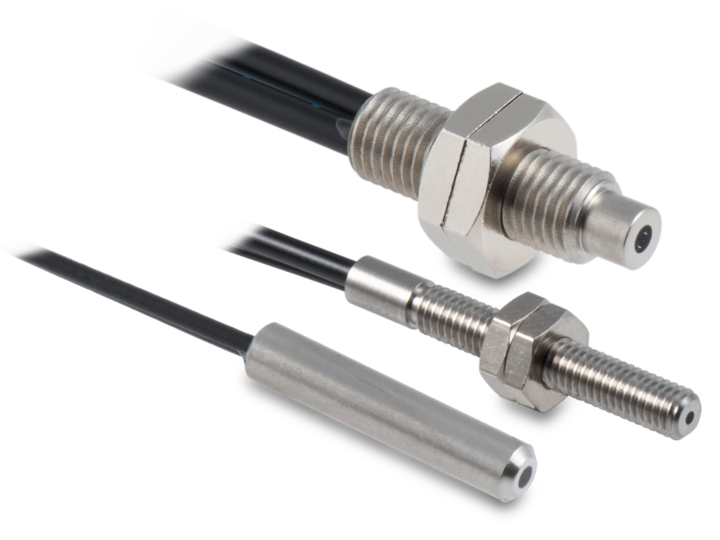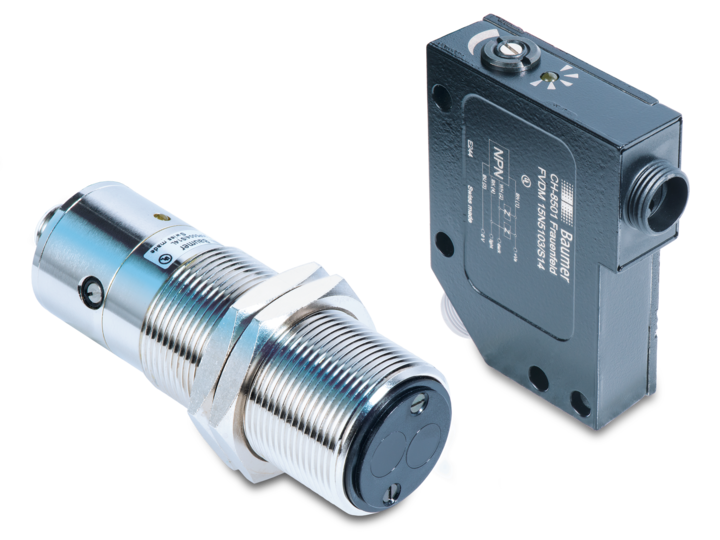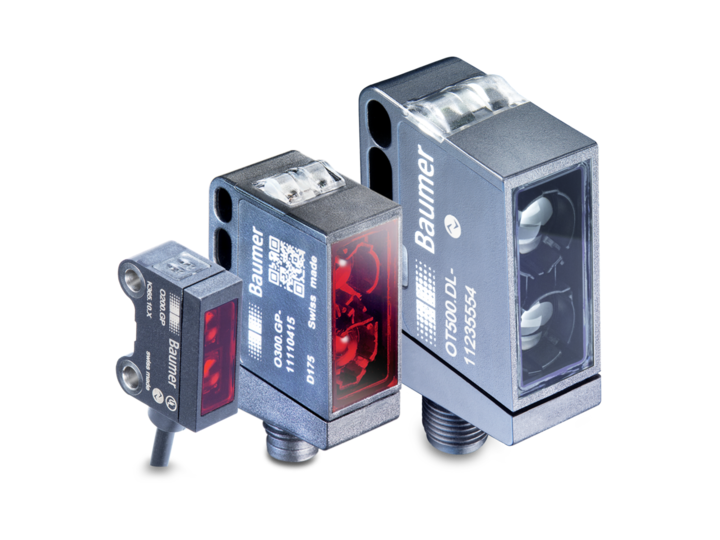Product portfolio
Cylindrical fiber optics
Square fiber optics
Miniaturized fiber optics
Specialized fiber optics
Plastic fiber optic sensors
Glass fiber optic sensors
Your benefits
- For installation in very cramped places or difficult to access
- Small and light sensing heads in cylindrical and square design
- Small light spots of 0.1 mm
- For particularly harsh ambient conditions - very robust, heat and chemical-resistant sensors
- With PTFE sheath as protection against aggressive media
- Ambient temperature of -60 … +350 °C
- Robust plastic or metal sheath
- Reliable detection in fast processes
- Short response times of < 0.05 ms
- Use in complex installations or drag chains
- Bending radii of only 1 mm
- Easy installation and setup
- Quick configuration by teach-in or potentiometer
- Large range up to 3.5 m
- Reliable detection of transparent media
Applications
Thanks to their versatility, fiber optic sensors match most different application requirements. The small, space-saving sensing head is ideal for use in cramped spaces. Different fiber arrangements allow for both monitoring defined areas and precise spots in positioning.
This generation of universal fiber optic sensors is particularly ideal in materials handling, where besides rapid process monitoring also accurate positioning or detection of small objects are everyday occurences. One single sensor assumes the tasks where previously many different ones would have been used. The user can select between 3 to 8 different operating modes, from extremely short response time to high sensitivity, which allows him the perfect application-specific match. Though being an all-in-one approach, the sensors are also easy-to-operate.
The specially coated sensing head is immune to chemical substances and oil to ensure reliable detection even under difficult conditions, e.g. filling levels or leaks in aggressive fluids. Glass fiber optic cables in a metal sheath (reinforced) enable use under harsh conditions with excessive pressure, tension and temperature.
- Pick & Place Tools
- Detection, identification and positioning of diverse objects
- Area monitoring by means of array fiber optics in linear arrangement
- Detecting filling levels or leaks, also in aggressive fluids
Technology
Through-beam sensors detect whenever an object interrupts the light beam between transmitter and receiver whereas diffuse sensors acquire the amount of light reflected an object.
The high-resolution analog-to-digital conversion in fiber optic sensors captures even very minor changes. This is important when it comes to detecting very small objects or differentiating between very fine contrasts.
In general, fiber optic cables are used in conjunction with the appropriate evaluation unit and for object detecion the type of fiber optic cable is decisive.
Plastic fiber optic cables
Plastic fiber optic cables mainly characterize by the properties of the material used – plastic. With the present-day plastic materials getting more and more advanced, they meanwhile allow bending radii of only 1 mm which is virtually impossible for glass fiber optic cables. Meanwhile, some fiber materials endure dynamic bending forces and this way allow use in drag chains.
Glass fiber optic cables
Unlike plastic fiber optic cables, glass fiber cables comprise hundreds of individual fibers, each of them transmitting a share of the emitted light. Depending on the way the fibers are arranged, they either generate a light spot or a light line. Furthermore, glass is a high-quality, durable material to guarantee a long and reliable service life.
Last but not least this is the reason why glass fiber optic cables are used in telecommunications. The high temperature resistance also allows for use in demanding applications that are impossible to realize with standard sensors.
Downloads
Brochures / Catalogs
-
Flyer – Glas fiber optics portfolio overview
Technical and Application Reports / White Paper
-
Application Report – Fiber optic sensors to detect liquid levels and leakage of fluids








